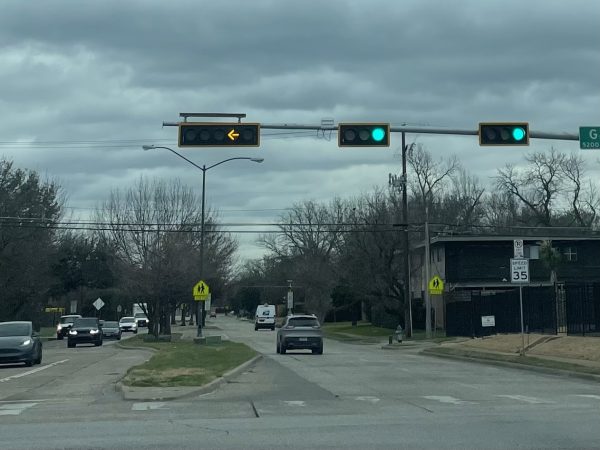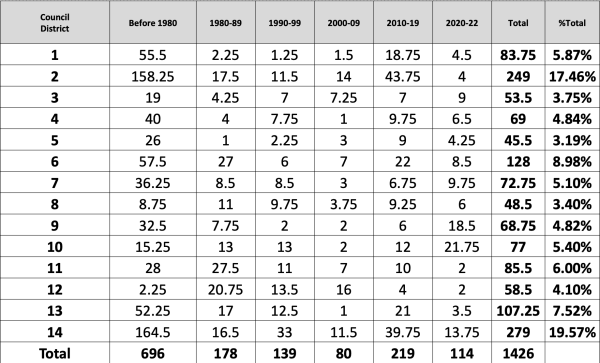
Traffic signal at Gaston Avenue and Munger. Photo by Renee Umsted.
The director of the department of transportation for the City of Dallas briefed the Dallas City Council on traffic signals this week.
In his presentation, Gus Khankarli provided the City Council with information about the age and number of traffic signals, costs and plans regarding data and security.
City Council District 14 had 279 signals (about 20% of all signals in Dallas), which was the highest number of signals among all districts, as of December 2021. District 9 had 69 signals as of December 2021. Together, Districts 9 and 14 had almost 25% of all traffic signals in Dallas.
Signals are counted not individually, but by intersection.
Over the past three years, more old traffic signals have been removed. As of December 2019, the City of Dallas had 748 traffic signals that were constructed before 1980, representing 54.2% of the total number of signals. By the same time in 2020, Dallas had 725 signals built before 1980, which was 51.6% of all signals. In December 2021, 696 signals were built before 1980; that was 48.8% of the total number of signals.
District 14 has 164 signals built before 1980, and District 2 has 158 built before 1980. Those districts have the highest number of the oldest signals among all City Council districts.
“It is the core of the city, and those were one of the first that were deployed, so we continue to try to address those as they come and focus on those,” Khankarli said.
District 9 has 32 signals built before 1980.
In 2020, Dallas added 49 signals. In 2021, 114 signals were built.
“We want to continue to see progression and decline in the number of traffic signals that were built prior to 1980,” Khankarli said.

Construction dates of traffic signals separated by City Council district. Photo courtesy of City of Dallas.
Installing new traffic signals is a task limited by the capacity of contractors. But Khankarli said he hopes about 100 signals can be installed over the next three years. The construction costs of a new traffic signal are around $350,000 per intersection, as of about three months ago. That includes installing ADA ramps, but it does not include any “geometric improvements” to the intersection.
City workers have implemented advanced traffic controllers to signals at all 1,426 intersections where signals are located. This means staff can maintain and view how each signal is operating without having to dispatch an employee to the field.
However, only 36% of the signals have radar detection; this is because many of the signals, especially the older ones, require upgrades to connect the detection system.
While the computers and technology involved with the signals ages out about every five years, the galvanized poles can last up to 75 years. But not all traffic signals have galvanized poles. Khankarli said some of the older signals downtown do not have galvanized poles.
Challenges to traffic signals include natural disasters, corrosion, third-party damage such as vehicles running into the signals and rodents damaging the cabinets.
In fiscal year 2020-21, the department of transportation responded to 354 traffic signals damaged by vehicles.





